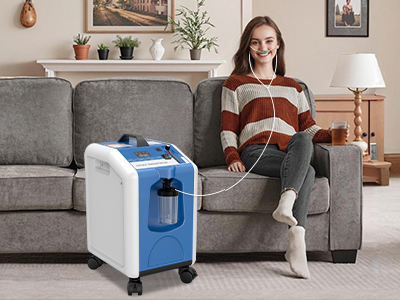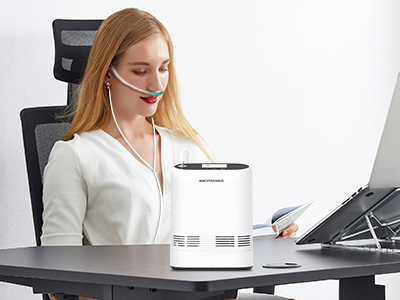27 Jun 2025
Home oxygen therapy doesn’t exactly sound like a party starter. It conjures up images of whirring machines, long coils of tubing, and a dramatic shift in daily life. And while all of that might be accurate, here’s what it also is—lifesaving, breath-giving, and sometimes, the next right step in living well with a chronic or acute respiratory condition. But how do you know when it’s time to consider inviting a high-tech oxygen sidekick into your living room?
Whether for you, a loved one, or your snore-prone uncle who insists he’s “just congested,” this guide walks through the signs, conditions, and moments when home oxygen therapy isn’t just a good idea—it’s essential.

Understanding What Home Oxygen Therapy Is (And Isn't)
Home oxygen therapy is the medical equivalent of giving your lungs a personal assistant. It supplies extra oxygen to people whose blood oxygen levels are too low due to various conditions. And no, it’s not the same as “just needing fresh air.” This is prescription-grade oxygen, delivered via tanks, concentrators, or portable units.
It’s used to help people:
Breathe easier during rest or exertion
Sleep more soundly without oxygen drops
Reduce strain on the heart and brain
Prevent long-term complications like pulmonary hypertension
It is not a cure, a fashion statement, or a spa treatment. (Though, let’s be honest—who wouldn’t want a sleek little oxygen unit that follows you around like a loyal pet?)
Signs You Might Need Oxygen Therapy
Oxygen therapy isn’t only for those gasping dramatically at the top of stairs. The signs can be subtle—or obvious enough to sound an alarm bell. Watch for these clues:
Shortness of Breath at Rest or Minimal Activity
If walking to the fridge feels like hiking Everest, your lungs may be waving a little white flag.
Chronic Fatigue or Foggy Thinking
Low oxygen can sneakily steal your brainpower and leave you feeling like you’re wading through mental molasses.
Bluish Tint to Lips or Fingertips
This one’s not just dramatic—cyanosis is a literal sign your blood oxygen is dangerously low.
Persistent Coughing or Wheezing
Especially if it’s paired with the breathlessness or chest tightness of a jazz saxophone solo gone wrong.
If you’re experiencing these symptoms regularly, it may be time to get your blood oxygen levels checked. Stat.
Conditions That Commonly Require Home Oxygen
Oxygen therapy isn’t reserved for the elderly or those with dramatic medical histories. A wide variety of conditions may call for it—temporarily or long-term:
Chronic Obstructive Pulmonary Disease (COPD):
The poster child of home oxygen therapy. When airflow is restricted and oxygen levels drop, therapy can help reduce shortness of breath and improve quality of life.
Pulmonary Fibrosis & Interstitial Lung Disease:
Scarred lungs = less oxygen intake = the need for support. Home oxygen steps in as the unglamorous but effective solution.
Severe Asthma or Bronchitis:
In rare, stubborn cases, oxygen therapy can help while the lungs calm down and recover from inflammation.
Sleep Apnea with Desaturation:
For patients whose oxygen levels plummet during sleep, nighttime oxygen supplementation can prevent the morning zombie shuffle.
Pneumonia or COVID-19 Recovery:
For people recovering from severe respiratory infections, temporary home oxygen may be part of the post-hospital healing process.
Congenital Heart or Lung Defects (in infants or children):
When tiny lungs need a little help doing a big job, oxygen therapy can be part of a broader care plan.
How Oxygen Levels Are Measured (And When They Matter)
Before you panic and start Googling “oxygen tanks for sale,” a proper diagnosis is key. Oxygen therapy isn’t based on vibes—it’s based on numbers.
Pulse Oximetry:
A simple finger clip that gives you a percentage reading of your blood oxygen saturation (SpO₂). Below 88% consistently? That’s a flashing neon sign.
Arterial Blood Gas (ABG) Test:
The more precise, slightly more painful big sibling to pulse ox. It measures oxygen and carbon dioxide directly from your blood. Doctors love it. Patients tolerate it.
The decision to start therapy often depends on oxygen levels during:
Rest
Activity (e.g., walking test)
Sleep
If you desaturate (drop below a certain threshold) during any of these, your doctor may prescribe supplemental oxygen—whether for use all the time, just during activity, or only at night.

When “Temporary” Becomes “Let’s Keep This for a While”
Some people are prescribed oxygen after an acute illness. The assumption? It’s temporary. But occasionally, oxygen overstays its welcome like a guest who never quite gets the hint.
So when does short-term support become long-term reality?
Recovery is slow or partial
Lung damage is irreversible
Oxygen levels remain low despite other treatments
Exertional desaturation persists beyond expected timelines
That’s not a failure—it’s just the body’s way of adapting. And it’s better to adapt with support than to suffer in silence (or gasping).
Practical Considerations Before Bringing Oxygen Home
Before you invite that concentrator to set up camp in your living room, ask yourself a few logistical questions:
Can your home accommodate the equipment?
Machines need outlets, space, and a flame-free zone. It’s not a roommate; it’s more like a VIP guest with very specific needs.
Are you or your caregiver comfortable with the setup?
Training is key. Tubing, flow rates, cannula swaps, alarms—none of it’s rocket science, but it does come with a learning curve.
Do you have backup plans for power outages or travel?
Your oxygen needs don’t pause just because the electricity does. Batteries and backup tanks become part of your home safety kit.
Will insurance cover it?
Many plans do, but the details can be foggy. Spoiler: it involves phone calls, codes, and potentially a minor meltdown.
The Mental and Emotional Shift
Starting home oxygen therapy isn’t just a medical adjustment. It’s a mental pivot.
People often worry about stigma, visibility, or losing independence. But here’s the plot twist: most people feel better once their body gets the oxygen it needs. You can think more clearly. Move more freely. Sleep more soundly. It’s not a step back—it’s a lifeline forward.
Embracing oxygen therapy means redefining strength. It’s not weakness to need help. It’s wisdom to accept it.
Keywords: oxygen therapy
Originally published 27 Jun 2025, updated 27 Jun 2025.